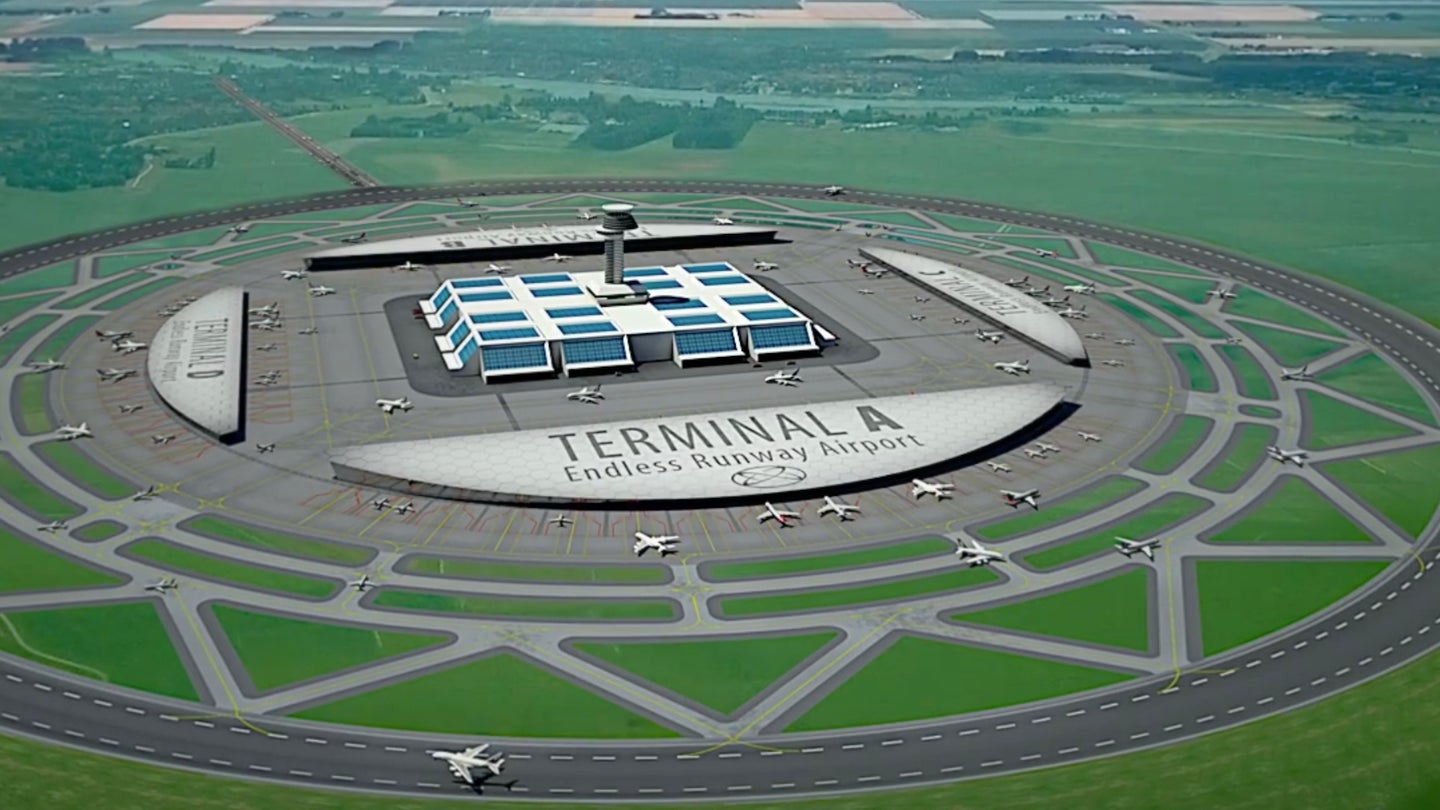Dutch Engineer Wants to Create Circular Runways for Efficient Drone Delivery
Are our airports ready for mass-amounts of drone deliveries to arrive and depart as best as possible? Henk Hesselink doesn’t think so.

Drone delivery is on the tip of everyone’s tongue these days. While cohesive delivery frameworks are being worked on in the U.S., Europe, and Japan, there are issues yet to reveal themselves to even the most busied drone think tanks. For example, while deliveries of small packages and light payloads may become commonplace in the near future, how can we transition from traditional truck-deliveries of goods to the aerial equivalent? Would these cargo-drones be flooding passenger airports on a regular basis, adding to the high volume of traffic already present? Or should we start thinking of exclusively drone-visited airports from now on? If so, what would those airports look like? Well, according to the BBC, Dutch engineer Henk Hesselink has recently revealed his vision for the future of drone airports. The key? Circular runways.
Amazon has been busy patenting any and every potentially brilliant idea related to drone delivery. We’ve seen them look toward railroad infrastructure, to combine the ability to transport large payloads while simultaneously sending off drones for localized, smaller deliveries. They’ve even drawn up plans for honeycomb-like structures called "fulfillment centers," where trucks deliver goods en masse, and drones take care of the individual deliveries. Hesselink, however, is paying attention to the overlooked aspect of all this brainstorming. Why have we accepted that the traditional truck delivery phase can’t be modernized, as well? Hesselink is determined to design circular runways at airports, which would reportedly maximize space, decrease risky crosswind landings, and decrease noise pollution. As you can see from the comments on BBC’s social-media post, reception toward this idea ranges from adoration to strong physics-oriented disagreement.
Here's Hesselink himself, explaining his idea in detail.
Hesselink is a development manager and researcher at Netherlands Aerospace Center, which certainly gives him the credentials to throw his hat in the ring, here. According to the BBC, he claims that this ever-increasing desire for drone delivery to finally be implemented will call for a “network of drones,” which, in turn, will require a specific infrastructure to be put in place on the ground. As our airports were never designed for unmanned aerial vehicles, it seems that Hesselink believes we can do better, and actually design runways specifically for UAVs. Currently, he’s working alongside Valkenburg airport between Leiden and The Hague in the Netherlands, which was once a naval base and is now Hesselink’s test-site.
Reportedly, the large drones in question, which would carry goods to distribution centers out of town, would be fixed-wing aircraft. They can fly for longer periods of time than your quadcopter, and carry an enormously higher volume, of course. Since drones aren’t quite as regulated regarding safety as airplanes that carry actual human beings inside, Hesselink believes that the circular runway could take advantage of that, and allow for more efficient arrivals and departures. “The circular runway concept comes at a perfect time,” said Hesselink.
Whether we’ll live in a world where circular runways are commonplace or not, Hesselink has a point. It may be wise to rethink our infrastructure, from time to time. Not every square peg has to fit into a triangle-shaped hole. It may be smarter, in the long run, to design solutions for specific problems, instead of retrofitting them.
